On the east end of Cockspur Island, in the middle of the Savannah River, sits one of the most massive brick fortifications ever built; Fort Pulaski. This impressive structure was named for Count Casimir Pulaski, a Polish soldier who fought in the American Revolution and lost his life during the Battle of Savannah in 1779. It was constructed over an 18 year period beginning in 1829, and sits on the Georgia side of the border with South Carolina. Sporting 7-1/2 foot thick walls that tower 32 feet above the 8 foot deep moat, it was felt that the structure was impenetrable.
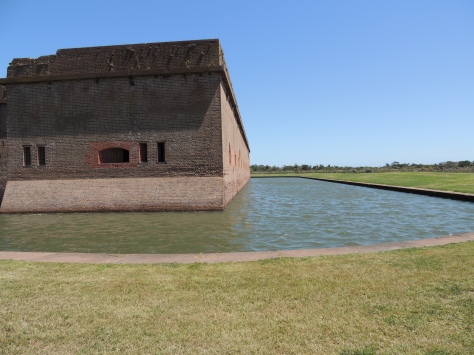
It was part of a coastal defense system put into place by President James Madison after the War of 1812.

It is interesting to note that preliminary construction of the fort…including the canal system seen above…was the first assignment for a young cadet fresh out of West Point by the name of Robert E. Lee. He was here from 1829 until 1831.
Even though it was completed in 1847, Fort Pulaski had not yet been manned by the army, nor was it fully gunned by the time 1860 rolled around. On January 3, 1861, Georgia governor Joseph E. Brown ordered the state militia to occupy the fort. This was in response to federal troops seizing Fort Sumter to the north at Charleston just two weeks earlier, after South Carolina voted to secede from the Union. Savannah was an important port for the southern states, and vital to the success of the Confederacy.
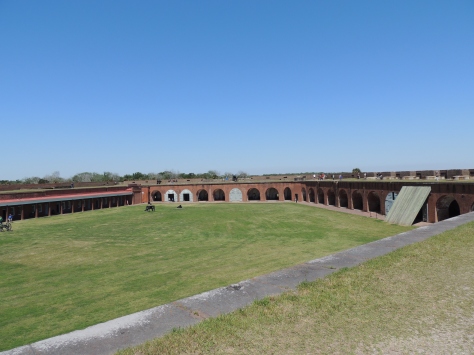
Work began in earnest to ready the post for the battle that was sure to come. Thick timbers, such as can be seen in the photo above, were leaned against the inner walls. This allowed a protected passageway between the casemates that surrounded the perimeter.
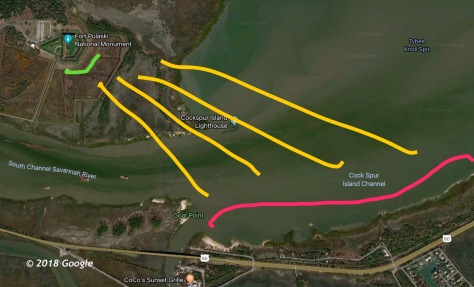
Within a year, Union troops were setting up a series of 11 batteries on nearby Tybee Island, just to the southeast. Those positions are signified in red in the above photo. With the south and southeast walls of the fort (noted in green) at more than a mile away, it was felt by the Confederates that they were safe from anything the Union army could lob at them from that distance. What they did not know was that the Federal troops had a new weapon: the 30 pound Parrott rifled cannon. This gun had spiraled grooves the length of its bore which increase the accuracy and velocity of its 30 pound bullet-shaped projectiles. This gun had a range of nearly five miles, so breaching Fort Pulaski’s walls at a mere mile away was a fairly easy task. There were five of these guns in the Union’s arsenal on Tybee’s shore, along with five smaller rifled guns and twenty-six mortars.
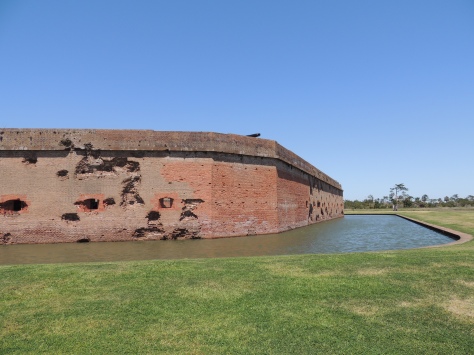
On April 10, 1862, Captain Quincy A. Gilmore sent a boat to Cockspur under the flag of truce to demand the confederates surrender the fort. That demand was refused, so Gilmore ordered his men to open fire. Thirty hours and over five thousand shells later, the Union army opened a hole in the southeast corner of the fort. The area that was destroyed was reconstructed and can be seen above as darker red brick. The rest of the garrison walls still show the damage to this day. Fearing that his powder magazines would be breached and the entire fort would be destroyed by the resulting explosion, Confederate Col. Charles H. Olmstead surrendered. Similar to the unsinkable Titanic that sank almost 50 years to the day later, this impenetrable fort was penetrated. Needless to say, confederate leaders were shocked.

Visitors today can still see some of the shells embedded in the walls, the backs of which all face northeast.
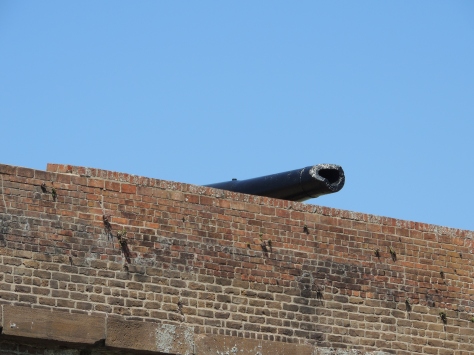
Even the tip of the southeastern-most cannon was damaged in the battle.
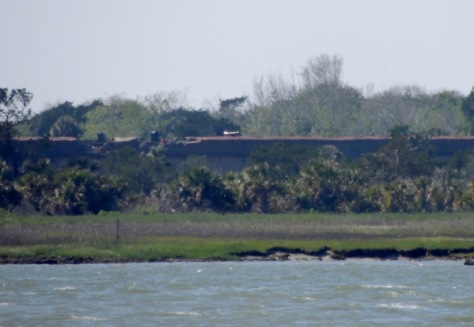
This is the view the Union soldiers had from Tybee Island, about one mile from the garrison’s southeast flank.
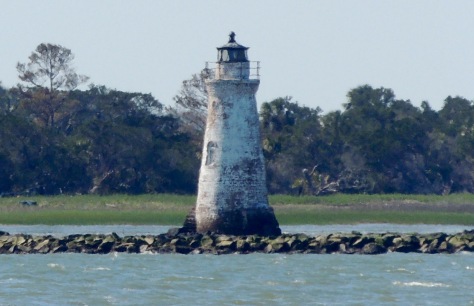
Amazingly, little Cockspur Island Lighthouse received hardly any damage during the siege, even though it was in the direct line of fire. It is still standing strong. It was re-lit in 2007 for historical purposes.
The 30 hour battle at Fort Pulaski rendered brick fortifications obsolete. Union troops repaired the hole in the outer walls and turned the structure into a prison until the end of the war. It was here that the Immortal Six Hundred…Confederate prisoners who refused to take an oath of allegiance to the United States…were held under horrible conditions. Thirteen of them died there and were buried along the outside bank of the moat. By 1880, only a lighthouse keeper and a caretaker remained. They too were soon gone, and the fort was left to the forces of nature. In 1924, Fort Pulaski was made a national monument, with restoration efforts taking place during the Great Depression.
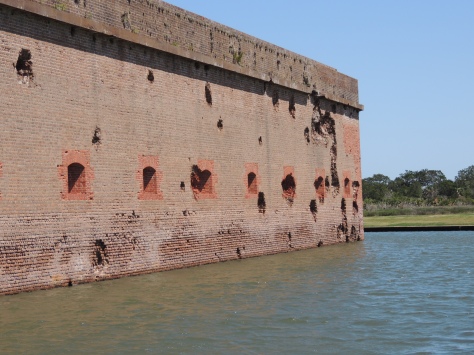
We learned a lot from our visit to Fort Pulaski, all while each adding a Junior Ranger badge to our collection. If there is one important takeaway from this monument, it is the fact that no one is invincible.
Stay tuned to see what we find as we explore further up the coast. Until next time, safe travels!

Great story. Wonder if I’m related to that Col.
LikeLiked by 1 person
Wow…now there is something to check out, Gaelyn! He wouldn’t be as far back as my cousin George Droulliard was.
LikeLike
Wonderful history, thanks for taking the time to share the fort’s story in such detail. I know you guys are loving this route!
LikeLiked by 1 person
We sure are, Jodee! This is in our wheelhouse, for sure!
LikeLike
Interesting history behind that fort. Looks like they had quite the battle there. Thanks for sharing!
LikeLiked by 1 person
Amazingly enough, the Union soldiers lost more guys than the Confederates, even though they had bigger artillery. Walking through some of the casemates, I can’t imagine the noise level in them with those cannons going off.
LikeLike
Great post about the history of Fort Pulaski. I’ve been there many times!
LikeLiked by 1 person
Definitely a lot of history around there, Beth!
LikeLiked by 1 person
We’re definitely putting this one on our list! Safe travels!
LikeLiked by 1 person
We really enjoyed it, Dawn!
LikeLiked by 1 person
Thanks for a great synopsis of Fort Pulaski’s history. We have enjoyed visiting so many of the coastal defense forts from that area. It’s great that they are being preserved. We particularly enjoyed the baseball photos taken at Fort Pulaski.
LikeLiked by 1 person
Those were very cool, Bonnie! It’s neat how guys from other parts of the country seeing the NY Infantry helped spread the game.
LikeLike
Very interesting. You two are collecting a lot of Junior Ranger badges!
LikeLiked by 1 person
Thanks, Jonell! We are going to need a bigger display board. 🙂
LikeLike